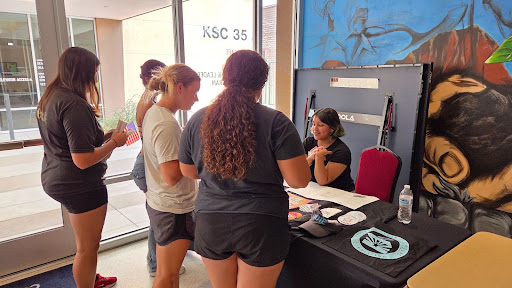Phoenix-Tucson rail plan takes new step forward
Keith Whittemore
Mesa Legend
 The vision of a passenger rail connection between the Phoenix and Tucson metropolitan areas entered a new phase following the release of a study about the possible environmental effects of a rail corridor between the two cities. The study, known as the Draft Tier 1 Environmental Impact Study (EIS), was published on Sept. 3 by the Arizona Department of Transportation (ADOT) in conjunction with the Federal Railroad Administration (FRA) and includes information about how two possible rail routes as well as a no-build option would influence both manmade and natural environments.
The vision of a passenger rail connection between the Phoenix and Tucson metropolitan areas entered a new phase following the release of a study about the possible environmental effects of a rail corridor between the two cities. The study, known as the Draft Tier 1 Environmental Impact Study (EIS), was published on Sept. 3 by the Arizona Department of Transportation (ADOT) in conjunction with the Federal Railroad Administration (FRA) and includes information about how two possible rail routes as well as a no-build option would influence both manmade and natural environments.

The Draft EIS comes after four years of research and surveys into how to best alleviate traffic congestion along the I-10, which is expected to worsen as both Phoenix and Tucson experience rapid population growth in the next several decades. “The need for this rail study is based on the expected growth,” said ADOT rail planner Carlos Lopez. “This growth will also lead to congestion between Tucson and Phoenix, so this study is looking at transportation options to provide an efficient transportation option between Tucson and Phoenix.”
The study identifies three options for improving the traffic situation: the Yellow Alternative, the Orange Alternative, and a no-build alternative. The Yellow and Orange Alternatives differ on where they stop in the East Valley (refer to the map), but share the same corridors through Phoenix toward Buckeye and Surprise, as well as along the I-10 toward Tucson. The no-build option includes a no passenger railway, but factors in modifications that have been proposed to the highway system along the current Phoenix-Tucson route.
As a way of gauging the public’s reaction to the study, ADOT and the FRA held a series of public hearings on Sept. 15, 16, and 17, in Phoenix, Tucson, and Coolidge, respectively, to give citizens a place to voice their comments and concerns. One such citizen was Jerry Kosowsky, who attended the Sept. 15 hearing in downtown Phoenix. Kosowsky expressed support for a railway between the two cities, but wondered about how well the proposed system, which was designed for a train speed of 125 mph, would adapt to future advancements in technology.
“My concern is that this thing is going to take years to build, and the technology is going to increase exponentially,” he said. “If you’re designing something specifically for a 125 mph diesel train, then you’ve limited what you’ve got.” Lopez responded by pointing out the necessary limitations on speeds based on the location of and distance between stops. “The speed for passenger rail was identified at 125 mph based on the space between stations from Phoenix to Tucson,” he said. “The spacing of those station locations would most likely not be long enough to get to higher speeds.”
Another potential sticking point for taxpayers is the cost of the proposed routes. The Yellow Alternative projects a cost of $4.5 billion up front plus an annual amount of $67 million in maintenance expenses, while the Orange Alternative could be as high as $7.6 billion to build with $86 million per year for upkeep. The source of funding for these costs has yet to be identified, according to the Draft EIS.
In spite of these concerns, Lopez has stated that, to his knowledge, public opinion has been “generally positive” in favor of a railway between Phoenix and Tucson. “We’ve had a number of public outreach events over the course of the past few years, and we’ve had more than 10,000 surveys,” said ADOT spokesperson Laura Douglas. “We’ve really had a lot of people engaged throughout this process. People want to lend their voice to the concept of a passenger rail between Phoenix and Tucson.”
The deadline for public comments is Oct. 30, 2015. Information on how to submit comments, as well as the full Draft EIS and additional details, can be found on ADOT’s website.









